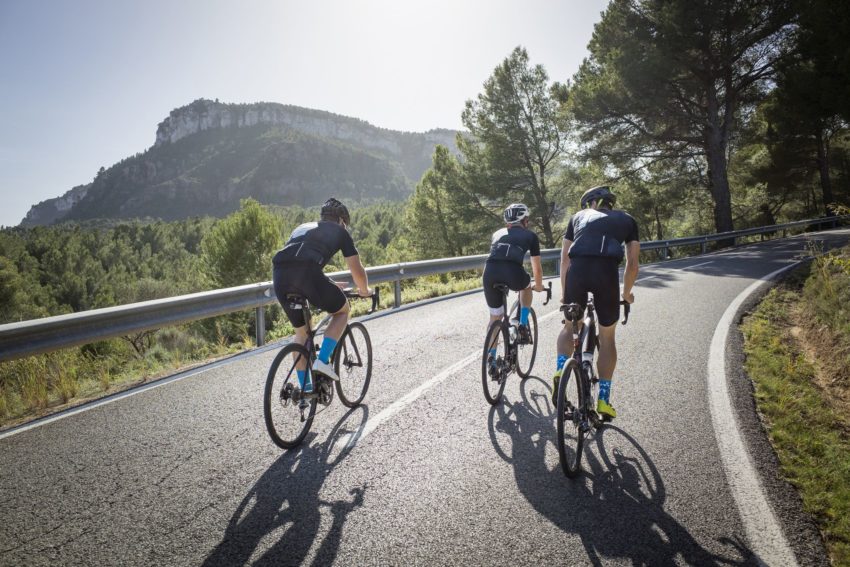BICYCLE SAFETY
If you or a loved one were seriously injured in a bicycle accident, please call us. We have extensive experience in bicycle cases. We have represented riders who were injured by negligent drivers in accidents which occurred on city streets as well as on roadways. In the city street cases, we need to prove a municipal code violation, whereas the roadway incidents invoke state law. We have also won cases on behalf of riders who were injured in accidents within City and State parks, cycling events, and bike versus bike crashes. We have experience with the investigation and data collection needed for winning a bicyclist’s case. Our lawyers are knowledgeable about the complex insurance issues in bicycling cases. These will involve auto insurance in the MVA cases, and homeowners’ policies in a dispute between riders. We love to ride ourselves, and from that experience we have a close understanding of the rules and dynamics of bicycling, both on the road and on a trail.
MORE RIDERS ARE ON THE STREETS
Bicycle sales and riding are on the increase since March 2020. Several reasons drive the change. In the pandemic, commuters favor bicycles over public transit. Gyms and recreation centers have been closed or operate at reduced capacity. A bike ride is a good workout. The change also comes from hard times – job loss, collapse of small businesses, juggling school age children at home along with remote work—bicycles are cheap in comparison to the expense of a car. Even before the pandemic, bicycle riding in Denver was on the increase. The 2019 Commuter Survey by the Downtown Denver Partnership showed that 9.2% of Downtown Denver Employees commute by bicycle, 1.0% use a scooter or moped. The bike mode share has doubled since 2013. Young people drive the increase; 14% of Millennials and Gen Z employees’ bike to work. The survey spurred Denver’s build-out of 206 miles of on-street bike lanes to give bicyclists a safe space.
SAFE SPACES ARE NOT ALWAYS SAFE
Subject to common-sense exceptions, “A person riding a bicycle or electrical assisted bicycle has all of the rights and duties applicable to the driver of any” motor vehicle governed by Colorado law and Municipal Ordinances. According to the United States Department of Transportation there were 857 bicyclists killed in traffic crashes nationwide in 2018. Colorado reported 20 bicycle MVA (Motor Vehicle Accident) fatalities in 2018. These represented 3.4% of the total Colorado MVA deaths (632) in 2018. Using the same ratio, we can estimate that in 2020, 110 bicyclists will sustain serious injuries in Colorado due to accidents involving a motor vehicle.
WE WANT YOU TO AVOID BEING A STATISTIC
Bicycle Safety falls under the jurisdiction of the National Highway Traffic Safety Administration. Here is a quick highlight of NHTSA’s safety brochure along with some of our own advice based upon our experience and our case files.
• VISIBILITY: Wear a helmet, one that fits, and wear it correctly. Wear high visibility clothing. Even in daylight use a white front light and a rear red light.
• EQUIPMENT CHECK: Ride a bike that fits and works; check the brakes; the gears; if using clip-ons make sure the pedals and your cleats match and are properly adjusted for a quick release. Tires matter, when worn, change them. If flat, inflate them.
• NO DISTRACTIONS: Do not wear earphones when riding. Don’t ride and text or do other irresponsible things with your mobile device that take your eyes off the road and your mind off what you are doing.
• OBEY TRAFFIC LAWS AND SIGNAGE: Use common sense. According to NHTSA, a large percentage of crashes can be avoided if motorists and cyclists follow the rules of the road and watch out for each other. Don’t run stop signs or red lights. Do not interfere with pedestrians’ rights of way. When on a busy street with following traffic, signal your turn.
• RIDE WITH THE FLOW OF TRAFFIC: Ride single file except on paths or roadways designated for exclusive bike use.
BICYCLE LIABILITY LAW
The most serious accidents are bicycle versus motor vehicle accidents. Drivers often are distracted as they begin a turn onto a street, and they don’t see or yield to a bicyclist who has the right of way. Drivers also do not give cyclists much room on a bike lane or shoulder and hit and injure the bicyclist who was lawfully in the bike lane or clearly on the roadway shoulder. Typically, these accidents leave evidence which we can use to prove fault, such as scuff marks on the road, tell-tale damage to either the body-work or right-side mirror of the involved vehicle. We have also tracked down eyewitnesses using 911 taped calls with number tracing. To prove the case, we need to show a driving infraction, just as we would in a car-on-car crash case. In these cases, we look to the liability coverage of the at-fault driver. Plus, the injured party’s under or uninsured motorist coverage from their own auto policy may provide additional money damages. Bike on bike accidents occur in crowded city parks or during events where many participants can be caught up in a crowd with other riders who have no experience riding in a large field of cyclists. These can be very serious accidents. In a rider versus rider case your auto insurance will not provide coverage for either the injured or the at-fault rider. Your homeowners’ insurance might provide coverage if you are the at-fault rider. The event itself is typically protected by a waiver. On behalf of the injured rider we need to show that the at-fault rider either violated a statute, a municipal ordinance, or was riding unsafely.
